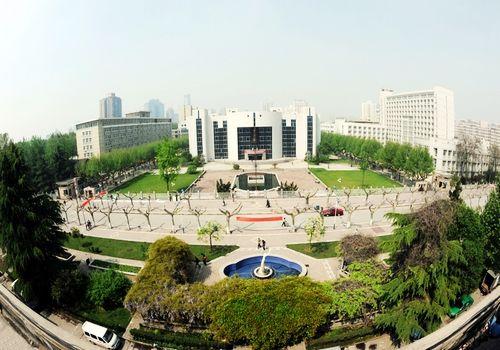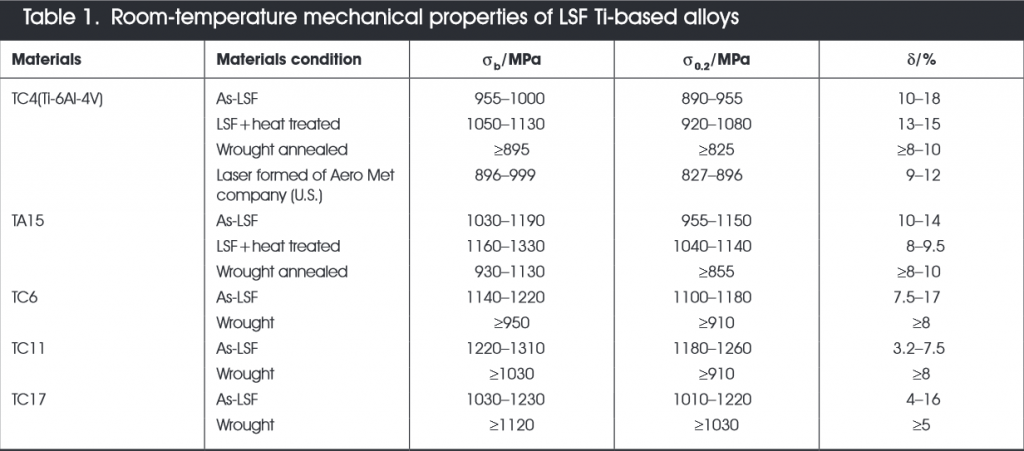“Additive manufacturing technologies have a global reach that is impacting the manufacturing landscape worldwide, and it is critical that both technology developers and users across the planet keep abreast of each other’s progress,” says Editor-in-Chief Hod Lipson, PhD, Professor at Cornell University’s Sibley School of Mechanical and Aerospace Engineering, Ithaca, NY.
With the different innovations being made all around the world, Lipson’s comment couldn’t be more true. Communication regarding all progress, and a worldwide collaborative effort is key to having huge success in additive manufacturing.
The latest in 3D news comes out of China, from researchers Weidong Huang and Xin Lin, of China’s Northwestern Polytechnical University, Shaanxi, in “Research Progress in Laser Solid Forming of High-Performance Metallic Components at the State Key Laboratory of Solidification Processing of China.”
The topic is direct fabrication of metallic components using laser solid forming (LSF) and its viability in the market. The hope with this process is that is can replicate properties currently produced through casting and forging. The researchers point out that great attention has been paid to rapid prototyping, employing selective laser sintering, with use of materials such as:
- Paper
- Wax
- Plastic
- Ceramics
- Metallic alloys
With the rapid prototyping methods in use and making headlines for some time now in additive manufacturing, scientists and researchers have been inspired to use the layer-by-layer printing approach in the area of 3D printing with metal components. Researchers Huang and Lin foresee this to be ‘a viable and promising manufacturing technology,’ as laser cladding can be used to:
- Strengthen mechanical properties
- Improve resistance to corrosion
- Repair parts
- Make metal matrix composites
“We found that laser cladding with synchronously feeding metal powders could be used for developing an additive manufacturing technique, that is, laser solid forming (LSF). Since then, we have carried out a lot of research on laser additive manufacturing, with the focus on obtaining fully dense metal parts with high mechanical properties,” state the researchers.
In the article Huang and Lin focus on:
Mechanical properties of typical LSF alloys
In their study of alloys, they found that LSF titanium alloys generally reach the wrought standards for forging, and especially most of the as- LSF titanium alloys. For superalloys, room-temperature mechanical properties of LSF Inconel 718 alloy (used in aeropace applications) met wrought standards. Concern was placed over the the mechanical properties of the LSF powder metallurgy superalloy and ultra high strength steel being below standard. The researchers stated that they could cause ‘microcracks and other metallurgical defects,’ which would ‘decrease the mechanical properties of LSF components.’ The bottom line was that LSF titanium alloy parts most especially ‘present outstanding mechanical properties’ in terms of the wrought forging standard.
Characteristics of as-LSF microstructures
While noting that the tensile properties of some LSF titanium alloy parts meet the wrought standards, the researchers point out that the ‘mechanical properties of LSF powder metallurgy superalloy and ultra high strength steel are still lower than the wrought or powder metallurgy standards, and that the further optimization on the LSF process and postheat treatment regimen should still be necessary for improving the mechanical properties of LSF metallic parts.’
The researchers came to the conclusion that it would not be prudent to evaluate the LSF components on the the metallurgical quality standards of the forging, because the mechanical properties of LSF components mainly depend on the intragranular microstructure, but not the grain structure. They advise that the ‘specified metallurgical quality standards for LSF components should be developed.’
Applications of LSF technology
Pointing out that 3D printing with LSF technology will easily lend itself to working in concert with conventional processing technology, such as casting, forging, and machining, they use the example of an aero engine created through hybrid manufacturing with LSF and casting. Using mainly titanium alloy, superalloy, high-strength steel, and other advanced aerospace materials, in combination with researching forming principles, equipment, material preparation, and mechanical properties—coupled with lowered cost of this technology, LSF technology is currently being used in aviation and aerospace, the automotive industry, mold designing and manufacturing, medicine, and a host of other applications, including dental—which the researchers show with the example of a titanium dental crown and mandibular base plate made with LSF technology. The lead time was less than one hour, with maximum thickness at about 1 mm.
The above mentioned paper was a Review article in 3D Printing and Additive Manufacturing, a peer-reviewed journal from Mary Ann Liebert, Inc., publishers. The article is available free on the 3D Printing and Additive Manufacturing website until November 9, 2014.
Subscribe to Our Email Newsletter
Stay up-to-date on all the latest news from the 3D printing industry and receive information and offers from third party vendors.
Print Services
Upload your 3D Models and get them printed quickly and efficiently.
You May Also Like
Consolidation in AM: How 2025 Is Shaping the Industry’s New Normal
The first half of 2025 has been marked by a clear shift in the additive manufacturing (AM) industry. Companies are no longer just focused on developing new tech by themselves....
Etsy Design Rule Change Reduces Selection of 3D Printed Goods
Online marketplace Etsy has implemented a rule change requiring all 3D printed goods on the site to be original designs. The update to the site’s Creativity Standards states, ¨Items produced using...
U.S. Congress Calls Out 3D Printing in Proposal for Commercial Reserve Manufacturing Network
Last week, the U.S. House of Representatives’ Appropriations Committee moved the FY 2026 defense bill forward to the House floor. Included in the legislation is a $131 million proposal for...
Transforming From Tourist to Native: Duro CEO Michael Corr Explains Why the Company Rebuilt its PLM Software on AI
In these early innings of the AI boom, many market analysts have expressed concern that AI spend has gotten too far ahead of the technology’s proven ability to deliver significant...




































